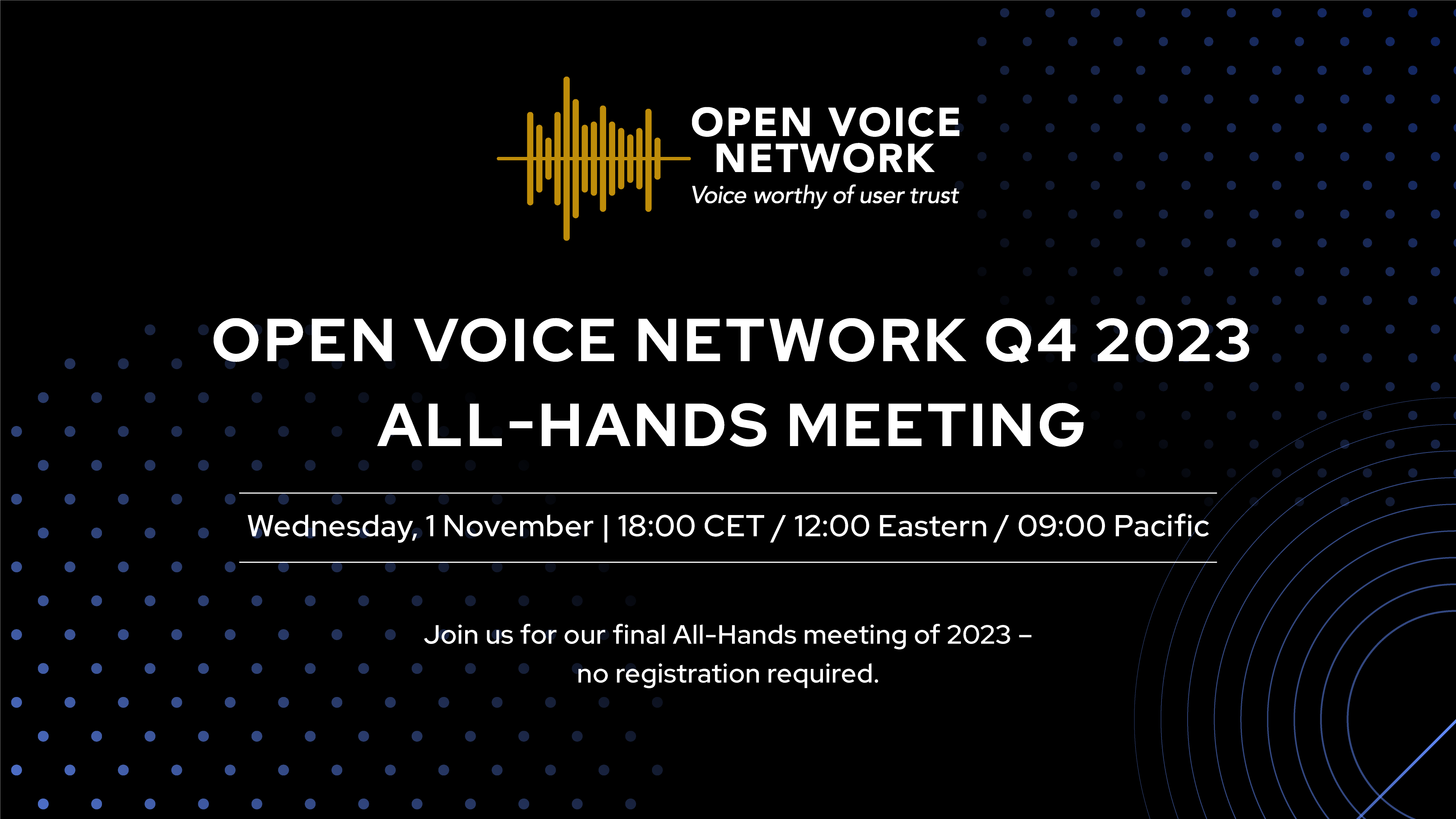The bells now tolling for the Conversational AI / voice industry signal not death, but a new beginning.
Voice has entered its next stage of maturity. It’s a market transition marked initially by job loss and worrisome headlines. But it’s also a transition that could loosen the bonds of old models and rusty definitions – a transition that could lift Conversational AI / voice from the depths of the hype cycle.
A transition, overall, that promises good news for the business of humans in dialog with computers.
Right now, we’re in the down times. A period in which conventional decision-maker wisdom about Conversational AI / voice has been shaped by a September Harvard Business Review article on the business value of voice technology, and business press headlines reporting the November layoffs at Amazon.
We can’t discount the HBR article, “Alexa, Should My Company Invest in Voice Technology?” The authors – in a publication that creates accepted truth in C-suites and among those who advise the C-suite – answered the title question with an ill-informed “no.”
Regrettably, the authors equated voice with an Alexa skill or Google action. And worse, their assessment of voice was based on a deeply flawed premise – that the value of a voice implementation could be measured by an increase in market valuation.
The methodology: on one hand, list the 112 firms that released a voice assistant on the Amazon Echo or Google Nest between 2016 and 2020. On the other hand, review stock prices before and after a release announcement. Did investors respond positively? When the former happened, did the latter go up?
You’ve got to be kidding.
The reality: it’s in HBR. A more thoughtful assessment is not.
The takeaway: we, the industry, must redefine the space and communicate value proposition and use case to enterprise decision-makers.
They will not come to us. We must go to them.
The layoffs. Job loss is painful. The news of layoffs at Amazon led to a flurry of headlines (“Alexa, Will You Ever Make Money?”) in the business press, and more than one message from non-voice folks asking if this was a death knell for the industry.
Truth be told, the decisions at Amazon were likely a response to long-simmering issues. For the past year, there have been news reports of a meaningful slow-down in device sales and consumer adoption (“Turns Out, No One Wants to Talk to Alexa”).
But this does not mean that Amazon is walking away from voice. Far from it. Wise industry observers such as Kane Simms (Kane’s comments), Bret Kinsella (Bret’s analysis), and James Poulter (JP’s analysis) have, in recent days, pointed to the substantial, ongoing strength of Amazon’s Conversational AI / voice business – 65 million Echo devices sold last year, a dominant consumer installed base, growing ecosystem and penetration in enterprise markets, a solid, substantial core of engineering and market development talent, and a name synonymous with the category. Bret, with his superb reporting, noted that the Alexa Platform, Alexa Advertising, Alexa Kids Experiences, and evangelism team for Alexa skills and enterprise services will largely maintain headcount – and that other teams will be slimmed, but not eliminated.
The reality: this is a course correction, an adjustment in asset allocation. In a back-handed way, it’s a bit of a compliment; Alexa is now mature enough to be worthy of hard-edged CFO evaluation. Such course correction is also quite normal in Big Tech. I worked for the Intel Corporation and Cisco Systems from June 2000 through December 2018 – an 18-year sample. In that time, within my business units, there were nine rounds of corporate reorganizations and layoffs – one roughly every 24 months. Why has it happened? As Kane and Bret pointed out, there was “unfounded optimism” in the market thirst for new and different devices, and, no doubt, a lack of faith in (or lack of patience for) the revenue/profit potential of Alexa Health and Wellness, Alexa Games, and Alexa Communications.
Given that, let’s look at some of the takeaways for Amazon and the Conversational AI / voice industry at large:
- There’s a core strategic issue here. As voiced by Kane: it may be time for Amazon to not try and do everything on its own. Might they pursue – in cooperation with others – the development of an open, standards-based ecosystem, one with billions of global destinations, and not just tens of thousands of skills?
- Conversational AI / voice is ultimately a software play. Is the path to effective monetization less hardware and better software? Could Alexa provide the best consumer entry point in an open, interoperable worldwide voice web? Might this open significant advertising, SEO, and new commerce opportunities?
Also: as Conversational AI / voice is defined not only by consumer adoption, but enterprise use (see below), we will likely see a shift away from single-purpose, single-platform voice devices. Look to the example of smartphones and laptops. Software will separate from hardware, and the device future will be won by volume hardware leaders. - There are issues of trust – both on the buyer and the seller side – and they center on data. It was said in the Bloomberg article, above, with little more than anecdotal evidence: “of course, no one trusts Alexa to buy things for them.” Sorry, but the author is dead wrong. Buying is a journey, and Vixen Labs’ Voice Consumer Index 2022 primary research study shows conclusively the market leadership of Alexa and the growing use of voice for retail and restaurant search, comparison, and purchase.
But yes, there are issues of trust. Issues primarily centered around data acquisition and use. Issues that concern not only consumer buyers, but also enterprise sellers. It’s real, and it’s not going away. - Conversational AI / voice must now pay its way. The era in which voice could ride on its “coolness” – ooh, look, it talks back to me – is over. Done. Gone. The fact that it is over is a tribute to visionaries like Adam Cheyer, the teams at Siri, Alexa, Google Home, and Bixby, and every individual who has grown voice from a concept to the everyday consumer experience detailed in the Vixen VCI. The CFO is now watching. And that means hard-edged assessments of value propositions and ROI.
- We must define Conversational AI / voice broadly. Our perception of value must not be limited to the consumer market. At the same time, the general business press is declaring the demise of voice, analyst firms such as Markets and Markets and Data Bridge Market Research see Conversational AI investment worldwide growing at >20% CAGRs through this decade. Juniper Research just forecast year-on-year 2023 global growth in conversational commerce of 89% to $25.1 billion (read the definitions carefully). Gartner predicted in an August 2022 report that Conversational AI will reduce contact center costs by $80 billion by 2026.
- There’s a core strategic issue here. As voiced by Kane: it may be time for Amazon to not try and do everything on its own. Might they pursue – in cooperation with others – the development of an open, standards-based ecosystem, one with billions of global destinations, and not just tens of thousands of skills?
This is real money. To be spent and made in Conversational AI / voice.
This is an inflection point for Conversational AI / voice. The opening act in a new era.
It suggests – actually, it demands – that we:
- Shift to a new definition of Conversational AI / voice, one that stretches from consumer platforms to the enterprise use cases that stretch beyond call center automation.
- Shift to a new definition of Conversational AI / voice, one that stretches from consumer platforms to the enterprise use cases that stretch beyond call center automation.
- Educate ourselves and our prospective clients on the business value Conversational AI will provide – measurably, sustainably – for them. With a deep understanding of financial and process pain points, use cases, and realistic expectations for three-year return.
- Educate ourselves and our prospective clients on the business value Conversational AI will provide – measurably, sustainably – for them. With a deep understanding of financial and process pain points, use cases, and realistic expectations for three-year return.
- Move from siloed, walled gardens to the development of an open, interoperable billions-destinations worldwide voice web. A web that connects consumer platforms to independent enterprise third-party Conversational AI deployments.
- Lift the issue of user trust to a preeminent, actionable position in the industry. The idea of “trust” of Conversational AI has been too often defined as solely an issue of user privacy and the protection of PII. In truth, it’s far more. Conversational AI is a volatile mix of artificial intelligence development (with accompanying issues of algorithm transparency and explainability, limits of and bias inherent within training data), the remarkable richness of voice data (especially through acoustic analysis), and the business models of proprietary, consumer-centric voice channels.
What’s needed: an industry “trustmark” that reflects employee education, implementation evidence, and corporate policy – to a preeminent position of discussion and action.
- Move from siloed, walled gardens to the development of an open, interoperable billions-destinations worldwide voice web. A web that connects consumer platforms to independent enterprise third-party Conversational AI deployments.
We, the Open Voice Network, stand ready to play our part.
The new era has begun.
Are you ready to play yours?



